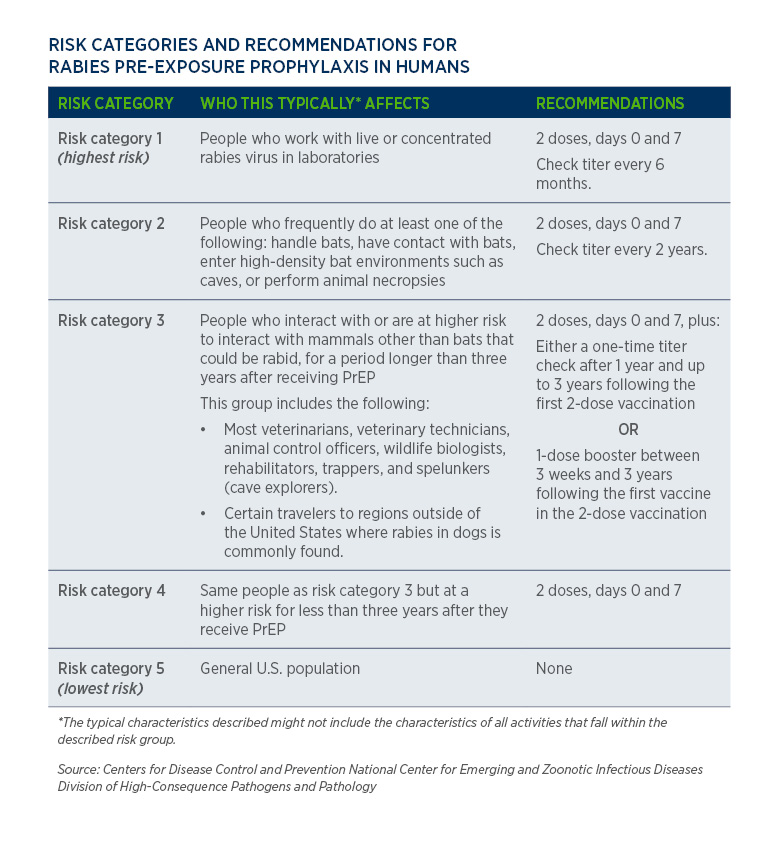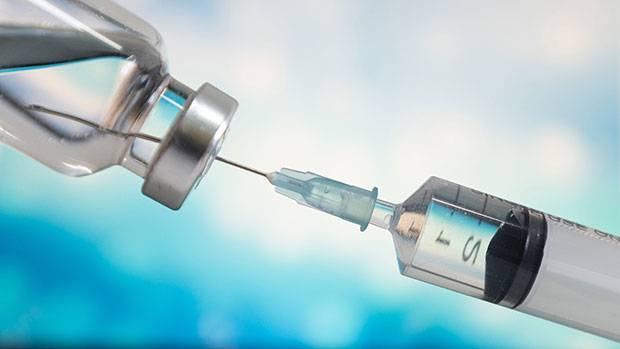The Centers for Disease Control and Prevention has updated its recommendations for rabies pre-exposure prophylaxis for humans to replace the three-dose rabies vaccination schedule with a two-dose vaccination schedule that will provide protection for at least three years.
The updated PrEP recommendations, published in the May 6 edition of Morbidity and Mortality Weekly Report (PDF), were developed by the CDC’s Advisory Committee on Immunization Practices. The group of medical and public health experts provides advice and guidance on controlling vaccine-preventable diseases in the U.S. civilian population.
The recommendations were last updated in 2008. The CDC noted barriers affecting adherence to the recommendations since then, according to the report, “including out-of-pocket costs of rabies biologics (3-dose PrEP vaccination series is currently estimated at ≥$1,100), confusion about which activities fall within different risk categories, and noncompliance with recommendations for repeated titer checks.”

Along with switching to the PrEP schedule of two doses seven days apart, the revamped recommendations list five groups categorized according to their risk of rabies exposure. Risk category 1 is the highest risk and meant for people who work with live or concentrated rabies virus in laboratories. Veterinarians and veterinary technicians join animal control officers and wildlife biologists in risk category 3, defined as “people who interact with, or are at higher risk to interact, with mammals other than bats that could be rabid, for a period longer than three years after they receive PrEP.”
Those who fall in risk category 3 and are seeking PrEP for the first time should receive the two-dose series and obtain either a one-time titer check one to three years following the two-dose vaccination or a one-dose booster between three weeks and three years following the first vaccine in the two-dose PrEP vaccination series.
Serial titer testing every two years is no longer recommended, including for those who previously received a three-dose PrEP series because recognized rabies exposures should always prompt evaluation for post-exposure prophylaxis, according to the report. The minimum acceptable laboratory value used to determine whether booster doses of rabies vaccine are needed was revised and standardized to 0.5 IU/mL, which aligns with current guidance from the World Health Organization.
The AVMA Trust offers two packages that include a rabies benefit: the Member Basic Protection Package and Student Basic Protection Package. Both packages provide a financial reimbursement for rabies vaccination and titer testing.
“Rabies exposure does occur in veterinary practice and because of this risk, it is recommended to follow CDC guidelines and medical professional recommendations for prophylaxis and post-exposure management,” said Dr. Linda Ellis, director of trust veterinarians for the AVMA Trust.
The AVMA Trust also offers the on-demand webinar “Rabies Liability: Is Your Practice Protected?” with information on ways to reduce rabies exposure and which types of coverage practices need to ensure they are protected from liability in the event of a rabies exposure.

